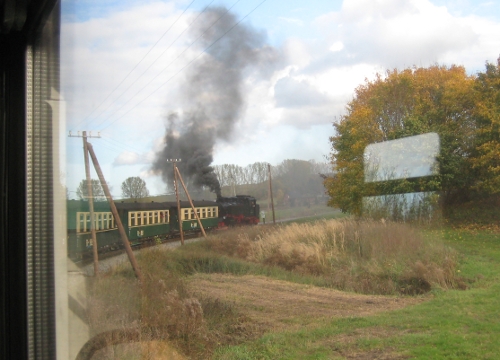
… und kam atemlos am Bahnhof an und schmiss mich in den „Rasenden Roland“, eine Schmalspurbahn, Ziel: Binz. Und von dort nahm ich einen Bus in einen Ort namens Prora, wo es den wunderbarsten Sandstrand gibt, den ich auf Rügen gesehen habe. Und kaum ein Mensch da.
… and reached the train station, quite out of breath, to board „Rushing Roland“, a steam powered narrow gauge railway, destination: Binz. From there I took a bus to a place called Prora where I found the most wonderful beach so far on Rügen. And not a soul there (well, almost).
Und auch, wenn man den Blick zum Land richtet, ist erstmal alles im grünen Bereich – im wahrsten Sinne des Wortes.
And when you turn to look onshore, everything seems to be just fine.
Wenn man sich dann auf durch die kiefernbewachsene Düne macht, schimmert schon was durch, aber eigentlich ist es ja doch ganz idyllisch, oder?
When you make your way through the pine-covered dune something shimmers on the other side but so far this seems quite idyllic, doesn’t it?
Ja, und dann steht man vor der ganzen Pracht, wofür Prora, was ja nun auch ein normales Örtchen ist, leider steht:
And then you face in all its glory what Prora – which is in fact a „regular“ little village, too – is associated with now:
Eine gigantische Ferienanlage, das „Kdf Seebad“ Prora, die zwischen 1936 und 1939 gebaut und in großen Teilen vollendet wurde. Bevor die Bauarbeiter zu anderen Arbeiten abgezogen werden mussten. Diese Monstrosität ist, kaum unterbrochen, 4,5 km lang und sollte es 20.000 Menschen gleichzeitig ermöglichen, Urlaub an der Ostsee zu machen.
A gigantic beach resort, the „Strength Through Joy Resort Prora“, was built between 1936 and 1939 and in large part completed – before the construction workers were needed elsewhere. This monstrosity stretches over 4.5km (3 miles) and 20,000 people were supposed to vacation there. At a time.
Wenn ich jetzt darüber nachdenke, stellt sich hier die gleiche Frage wie am Vormittag: was macht man damit?? Einzelne Blocks sind aufgekauft von Firmen, die dort Apartments ausbauen wollen. Für Preise wie ca. 140.000 Euro für knapp 50m². Ich halte das für wahnwitzig. Und für wieviele Jahre will man auf einer Baustelle leben, wenn VIELLEICHT die anderen Blocks auch nach und nach eine Verwendung finden? Oder, schlimmer noch: was, wenn sie KEINE Verwendung finden?
Come to think of it: the issue is quite similar to the one this morning… what to do with it?? A few of the blocks have been bought by developers and work was ongoing to create apartments. For prices such as 140,000 Euros for less than 50m². I think that’s crazy. And for how many more years are you willing to live on a construction site in case that MAYBE the other blocks will be converted into whatever as well? Or, worse still: what if they are NOT developed at all??
Seid froh, wenn ihr den Strand findet… Die folgende Aufnahme habe ich in der Ausstellung MACHTUrlaub abfotografiert, sie zeigt lediglich den südlichen Teil der Anlage.
You can consider yourself lucky when you find the beach… I have taken a picture of an aerial in the accompanying exhibition MACHTUrlaub which shows only the Southern half of the complex.
Und in welch krassem Gegensatz diese Form des Urlaubens, mal ganz unabhängig von der dahinterstehenden Ideologie, dazu steht, wie man – oder zumindest ich – das heute so machen will. Was liebe ich die kleine Pension, in der wir sind und mein Rosenzimmer-Unikat…
And when I think about this way of vacationing, not even taking into consideration the underlying ideology, and compare it to the way we – or I at least – want to vacation today… the contrast couldn’t be any starker, could it? How I love my small guest house with my one of a kind rose room…
Barbara

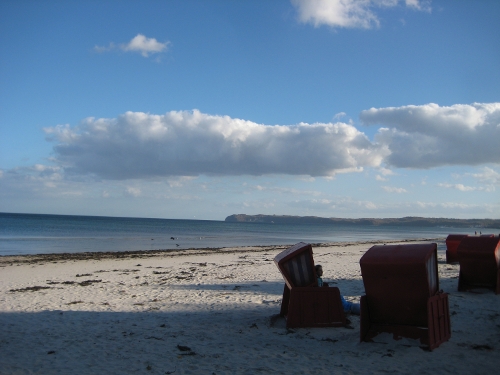
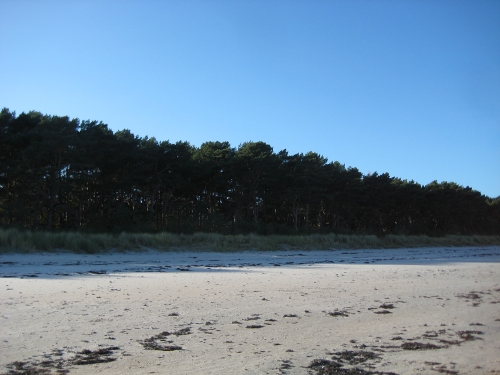
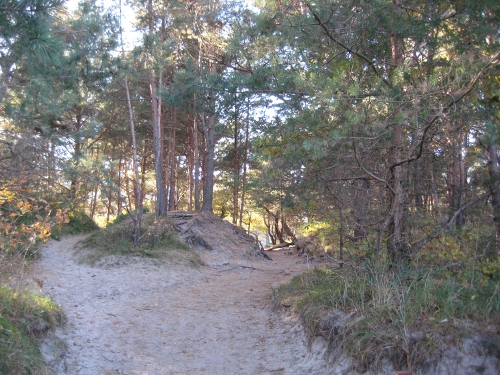
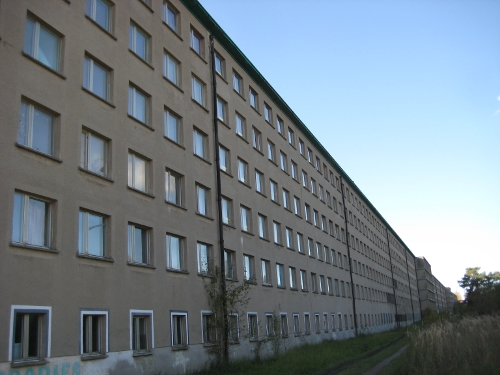
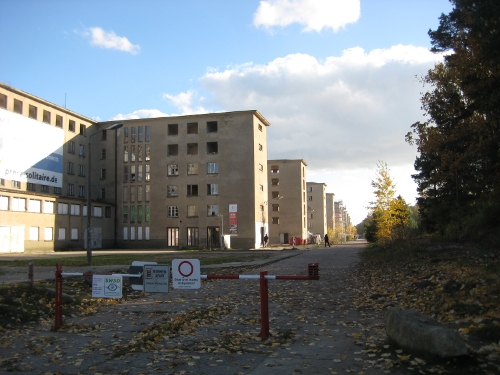
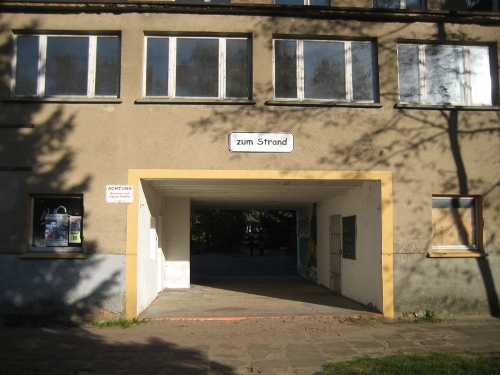
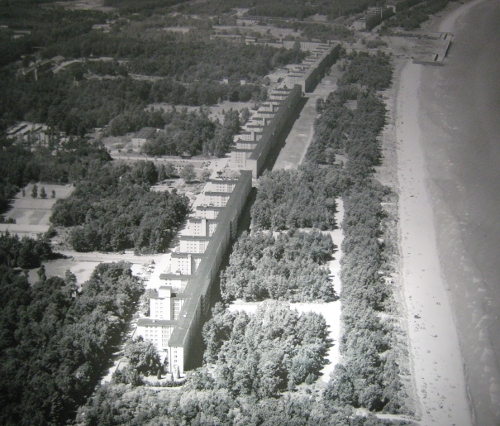
Umm Barbara you are so right here so sad this has happened in so many other places too
LikeLike
Oh WOW! A get away from the everyday….NOT!
LikeLike
Wonderful photos … my husband would love to travel on that train!!
LikeLike